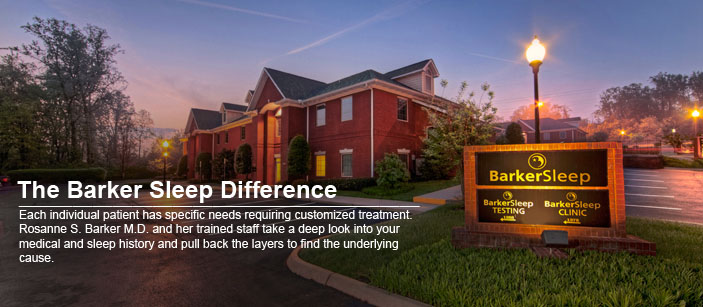Authors and Institutions
Ball L, Barker R
1 University of Tennessee Department of Internal Medicine, Knoxville, TN
2 Barker Sleep Institute, Knoxville, TN
Introduction: While continuous positive airway pressure (CPAP) remains the first line therapy in the treatment of obstructive sleep apnea (OSA), oral appliance therapy is a valuable alternative treatment modality. More recently, remotely controlled mandibular protrusion sleep studies have been demonstrated to predict reliably the outcome of oral appliance treatment. The aim of this study is to identify factors which may influence the treatment response to remotely controlled mandibular protrusion device as surrogate markers for the success of oral appliance treatment.
Methods: This is a retrospective study of 113 individuals fourteen years of age and older who underwent therapeutic polysomnography (PSG) with MATRx (product of Zephyr Sleep Technologies, Inc.) for treatment of OSA. Five individuals were excluded because diagnostic PSG data was unavailable. Data was analyzed for differences between patients whose OSA was successfully controlled during the device study and patients whose OSA was uncontrolled despite maximal advancement of the mandible. Variables assessed included age, body mass index (BMI), neck circumference, Mallampati class, total apnea-hypopnea index (AHI), AHI during rapid eye movement (REM) sleep, and AHI during supine sleep.
Results: A total of 108 patient charts were reviewed. Of those, 85 patients had their OSA successfully controlled using remotely titrated mandibular protrusion; 23 did not. Of those successfully treated, 47 were female; 38 were male. Of those not successfully treated, 11 were male; 12 were female. In comparing the two patient groups, patients not successfully controlled with remotely controlled mandibular protrusion had significantly greater age (p=0.0009), BMI (p=0.0015), overall AHI (p=0.0002), and AHI during supine positioning (p<0.0001) compared to patients who were successfully treated. Neck circumference, Mallampati class, and AHI during REM did not differ significantly between the two groups.
Conclusions: Our analysis suggests that patients who are older and those with higher BMIs, more severe OSA, and particularly severe supine events may not be good candidates for oral appliance therapy for treatment of OSA. The impact age and positioning may have on a patient’s response to therapy suggests an opportunity for further investigation to expand the availability of treatment options for OSA patients.
Support (If Any): No disclosures.
Does stabilization of the mandible alone without advancement impact OSA?
Performance of Remotely Controlled Mandibular Protrusion Sleep Studies for Prediction of Oral Appliance Treatment Response
Age:
SE 3.505
95% CI 5.0551 to 18.9449
Tstat 3.426
P = 0.0009
BMI:
SE 1.292
95% CI 1.6476 to 6.7724
Tstat 3.257
P = 0.0015
NECK:
SE 0.492
95% CI –0.3890 to 1.5690
Tstat 1.199
P = 0.2341
Mallampati
SE 0.135
95% CI –0.1473 to 0.3873
Tstat 0.891
P = 0.3751
AHI:
SE 3.147
95% CI 5.9911 to 18.4689
Tstat 3.886
P = 0.0002
REM AHI:
SE 4.642
95% CI –3.5030 to 14.9016
Tstat 1.228
P = 0.2222
Supine
SE 4.689
95% CI 14.9446 to 33.5365
Tstat 5.170
P < 0.0001
Non-supine
SE 3.410
95% CI 3.992 to 17.5156
Tstat 3.154
P = 0.0021
Identifying Features Correlating with Treatment Response to Remotely Controlled Mandibular Protrusion and Management of OSA
Anna Miller-Sleep Apnea
“Suddenly I woke up in the middle of the night with an extremely rapid heart beat. It was Atrial Fibrillation, they call it AFIB. Barker Sleep did a sleep study and I had 137 episodes a night. They recommended a CPAP machine, I’ve used it every single night for 6 years and have never had another episode. My husband slept with earplugs for 6 years, he hasn’t had to do that anymore and I haven’t had a heart attack.”
Betty Kyle-MATRx Oral Appliance
“I don’t have a CPAP, I don’t have a chinstrap. I feel liberated!” – Betty Kyle
Amanda Gerth-Jones Sleep Apnea
“I was exhausted for some time and finally broke down and had a sleep study. I found out I have severe sleep apnea and now it’s a world of difference with the CPAP machine and the help of Dr. Barker and her staff.”



